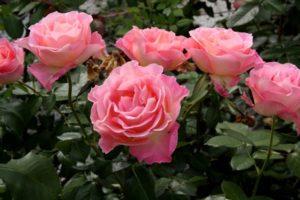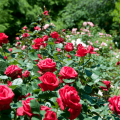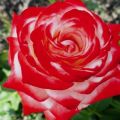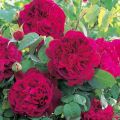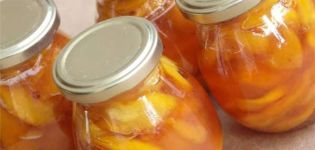Features and popular varieties of musk roses, subtleties of planting and care
Musk garden roses are gaining ground in the hearts of gardeners every year. The blooming bush of musk roses will become a real decoration of the infield. These roses do not require constant maintenance, bloom throughout the season and fill the garden with the fragrance and scent of fruit. Thanks to the efforts of breeders, a huge number of different varieties and colors have been bred.
History
The birthplace of fragrant beauties is China and India. Officially, musk roses entered the register of breeders in 1904, when P. Lambert bred a hybrid from natural species of musk roses, which was named Trier, later Trier gave rise to a new variety of musk roses - Mozart.
Features of musk roses
In our country, musk roses are not very popular due to the peculiarities of their appearance, the inflorescences resemble rose hips. But every year, more and more often, designers include lush bushes in the formed landscape. Consider the features of the form:
- Small double flowers are collected in lush inflorescences.
- Stamens in flowers are pronounced, emit a rich aroma.
- Long flowering period.
- Flowering on the shrub begins from top to bottom, the buds completely cover the plant.
- They are unpretentious in care, endure prolonged cloudy weather in summer and winter cold.
- Strong immunity to fungal diseases.
Musk rose bushes in landscape design are placed in the background, the plant looks spectacular and fills the garden with fragrance.
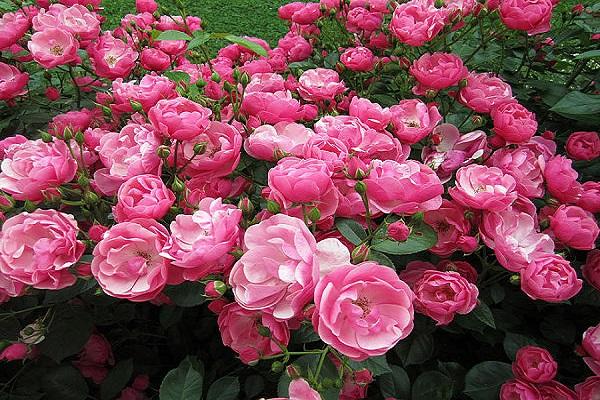
Popular varieties
Every year breeders replenish the collection of musk roses with new species and varieties. Consider the most popular and favorite varieties of musky beauties for gardeners.
PaxPax
A spreading bush, completely covered with snow-white semi-double flowers with prominent yellow stamens. Brush-shaped inflorescences include up to 30 buds. Plant height can reach 4 meters. Leaves are dark green, glossy.
Cornelia
A studless variety reaching 1.6 meters in height. Flowers are collected in cluster inflorescences, which include about 25 buds. Delicate semi-double flowers, delicately apricot color, bloom from red-colored buds. The edge of the petals is wavy.
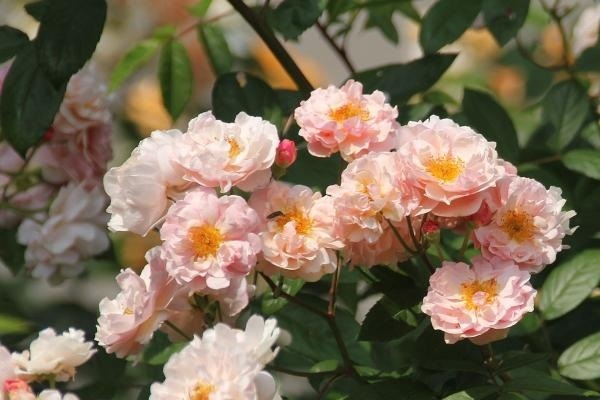
If the bush grows in an area that receives a lot of direct sunlight, the flowers fade.
Ballerina
Popular and demanded variety. Flowers are small in size, collected in cluster inflorescences, which can include up to 100 buds. The color of the petals is deep pink, it can fade in the sun.The height of an adult bush is 1.5 meters.
Mozart
The variety is the ancestor, which is one of the most popular varieties at the present time. The flowers resemble a classic rosehip, the middle of the flower is white, the edges are pink, the stamens are bright yellow. Inflorescences-clusters include up to 50 buds. Mozart's bush is wide, spreading, up to 3 meters high.
Felicia
Large double flowers of a delicate pink color, completely covering a two-meter bush, are a gorgeous sight. On the shoots of the plant, there are red thorns. Felicia almost never suffers from fungal diseases, it is frost-resistant.
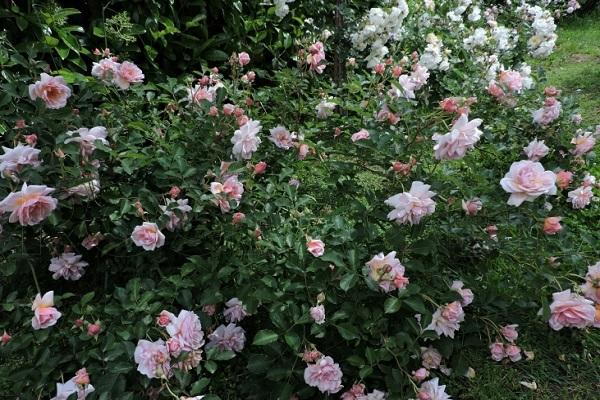
Buff beauty
The original color of the petals is apricot orange. Terry flowers are collected in cluster inflorescences of 30 pieces. The height of an adult bush is 2 meters. The leaves are dark green, reddening when approaching the buds.
Bouquet parfait
French variety. The flowers resemble a ball, super double, milky white with a delicate, barely noticeable pink border. The height of an adult plant is 1.5 meters, in width the bush reaches a size of 1.3 meters. The variety belongs to frost-resistant species.
Neige dEte
A musky terry rose, not prone to falling petals, even in the season of long rains. The color of the petals is white, the shape of the flower is cup-shaped. The aroma is bright, honey. The stamens are yellow. The variety tolerates winter frosts.
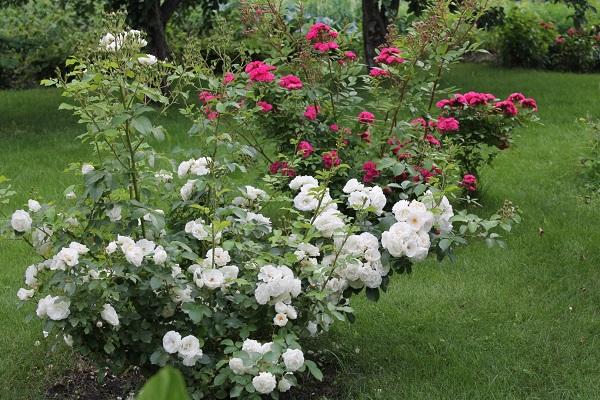
Alden biesen
Not a terry look. Flowers are collected in pyramid inflorescences. The color of the petals is soft pink. At the end of flowering, the flowers do not crumble, but gradually turn green, like a hydrangea. Exquisite dry bouquets and compositions are created from Alden Biesen flowers.
Bukavu
Musk rose is not terry type. Flowers are collected in cluster inflorescences, the color of the petals is saturated red with a white center and yellow stamens, the edges are wavy. The height of an adult plant is 1.5 meters. Bukavu is not afraid of rain, does not crumble.
Dinky
Terry musky rose with gorgeous fuchsia blossoms. The bush is formed small, up to 1.2 meters high. Green, glossy sheet plates. The plant tolerates rainy weather well, flowers do not crumble.
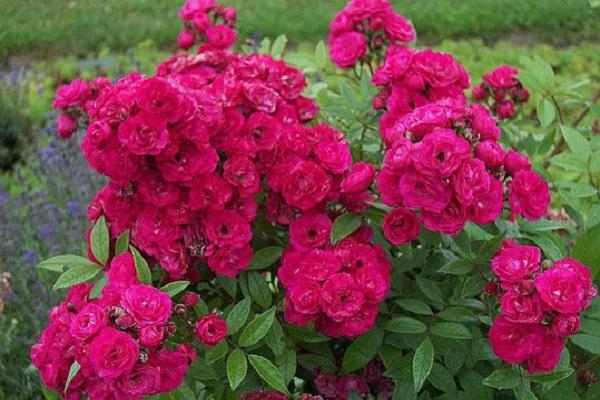
Havenly Pink
Musk rose of an erect type, up to 1.4 meters high. The flowers are super double, chic, soft pink, collected in pyramid inflorescences. The plant tolerates drought, rain and winter frosts.
Schwerin
Forms a powerful, spreading bush. Flowers are not double type, fuchsia color with prominent yellow stamens. Small cluster inflorescences, including up to 25 buds. Winter-hardy variety.
Moonlight
A plant with flowers of a delicate yellow color. Forms small inflorescences with 6-7 buds. The leaf plates are dark green, glossy. The plant is recommended for growing in regions with a capricious climate and high rainfall. Moonlight is not afraid of winter frosts.
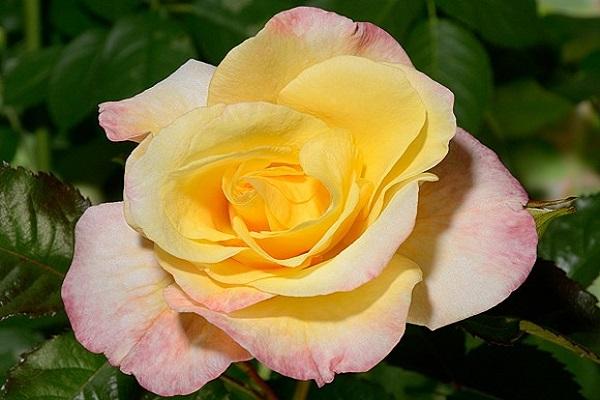
The subtleties of planting flowers
Musk roses are unpretentious flowers that do not require regular maintenance. Therefore, the landing system and the choice of location must be treated with special attention.
Subject to agricultural technology and a successful choice of the site, the bush will require minimal work from the gardener in the future.
Roses of all varieties can be planted in early spring or autumn. Summer planting is practiced only for seedlings with a closed root system. Fragrant beauties love the sun, but they feel great in shady places, the main thing is that the soil under the bush is not swampy. Moisture stagnation at the roots adversely affects flowering.
The depth of the planting pit is 60 centimeters, expanded clay drainage is installed at the bottom, fertilizers are applied. At the base of the pit, a small dense slide is made, along which the roots are carefully spread. The plant is sprinkled with the main soil, watered and tamped so that the root collar remains above the ground.

Features of care for musk roses
The care of plantings from these plants is minimal; the shrub, subject to the conditions of planting, will not require much attention. The plant care complex includes:
- Rejuvenating, flowering-stimulating pruning in early spring.
- Application of organic and mineral fertilizers 1 time per season.
- Shelter for the winter, if recommended to the variety.
On a note! Often after flowering, fruits are formed on the bush, they must be collected so that the subsequent flowering is abundant.
When preparing the plant for winter, the lashes are bent. From covering materials, agrofibre and spruce branches are used.
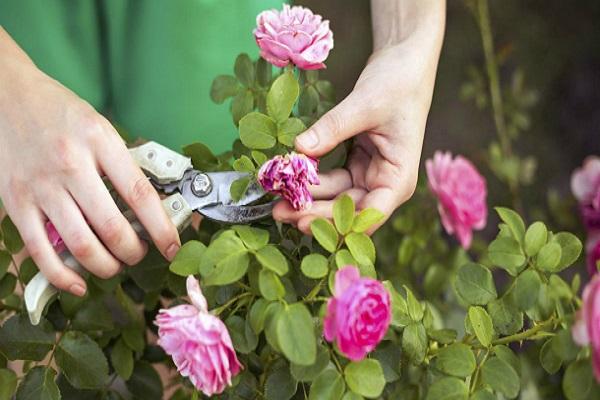
Ways to protect against diseases and pests
Musk roses of all varieties are distinguished by persistent immunity. In order to avoid infection of plants with fungal infections and pests, it is recommended:
- Plant varieties that are resistant to a wide range of fungal diseases.
- Plant roses in well-lit places on the south side of the site, avoid wetlands.
- Carry out preventive treatment of musk roses from pests.
- Follow the method of pruning bushes.
- Do not use fresh manure as the main fertilizer.
- Rejuvenate and transplant roses in a timely manner.
With the right choice of place and respect for the shrubs, the cultivation of fragrant beauties will become a favorite business that does not bring hassle and high labor costs.
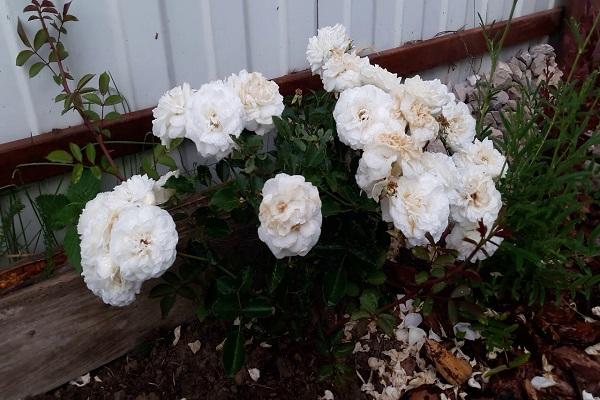
Reproduction of roses
Plants are propagated in three ways:
- dividing the bush;
- vaccination;
- by cuttings.
Musk roses are often grafted onto rose hips. Cuttings quickly take root and form a root system. It is recommended to divide the bush in early autumn, during the period of plant buds.
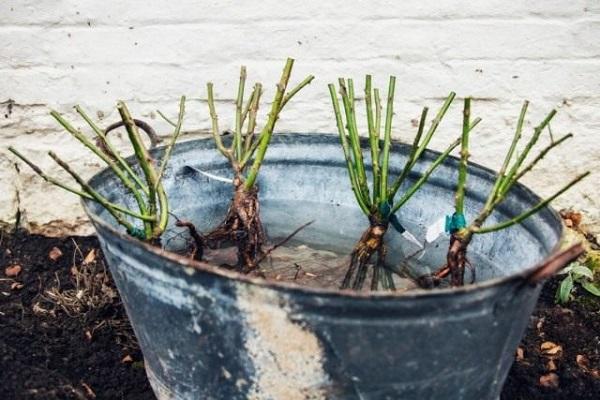
Examples of use in landscape design
The main rule of landscape designers when growing musk roses is to plant shrubs in the background of compositions. Musk rose varieties can be combined to form hedges. It is important to leave plenty of space between the plants.
From companion plants for musk roses in group plantings, geranium, barberry, clematis, and derain are used. The color palette of flower arrangements is formed according to your taste.
